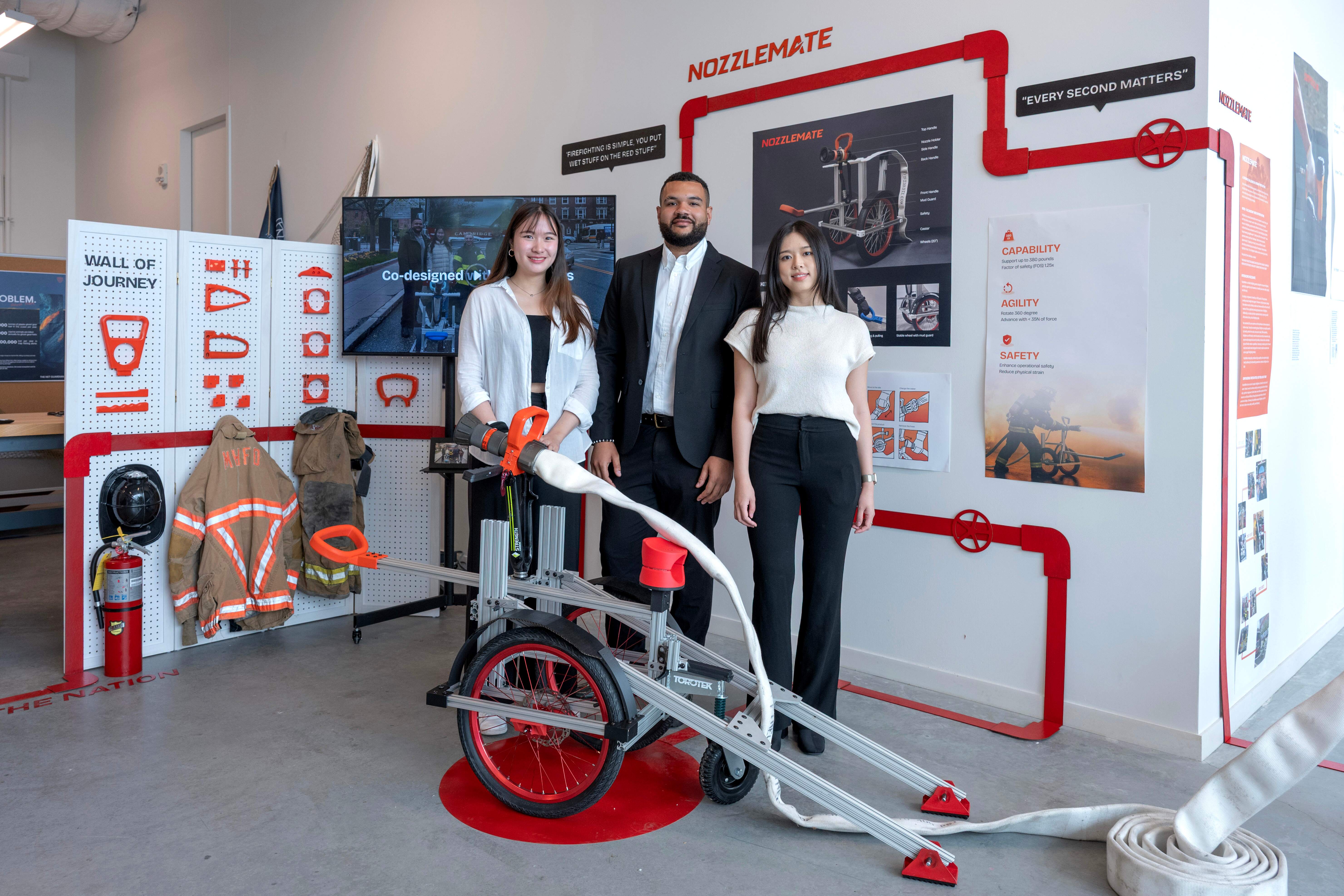What it does
Nozzlemate is an agile hose carrier to support and advance the firehose under extreme water pressure. It was created to integrate seamlessly with the preexisting protocols of urban firefighters.
Your inspiration
As a team, we were interested in addressing an intractable problem that existed in major urban environments. So, we spent months researching firefighting techniques and workflows. After dozens of user interviews, it was clear that advancing and supporting hoseline was a known but poorly addressed problem. Our data shows that 14% of firefighter deaths are related to advancing the hoseline and attacking a fire. For nearly a century, this task has demanded the strenuous effort of four or more firefighters dragging heavy hoselines across the ground. We were convinced there had to be a more efficient and less physically taxing method.
How it works
We created an agile hose carrier to support and advance the firehose under extreme pressures. Firefighters approaching a burning building must drag a heavy hoseline, full of water, which has a tremendous amount of friction force. The wheels on Nozzlemate have alleviated this force. Once positioned, water flows through the nozzle, and firefighters experience a significant reaction force. We eliminated this force by creating a weighted brake that can be activated by being stood on. Our solution empowers a single firefighter, regardless of physical strength, to do the work that once took four, strong firefighters. This sole operator will use handles and mounts that are ergonomically designed to suit firefighters' hand sizes and dexterity, even while wearing thick protective gloves.
Design process
Over 6 months, we co-designed Nozzlemate alongside firefighters, chiefs and city officials. Our team interviewed over 60 firefighters and found that advancing and securing fire hoses was an extremely pressing issue. To further understand the tactics and equipment, we visited a fire house numerous times and documented everything. We coordinated with officials to further understand how water was distributed and consumed at the municipal level for firefighting. Building on these insights, we began with hand sketches and built 20+ small-scale prototypes to explore form, portability, and movement. These tests refined core mechanics. We then developed 3 rounds of full-scale prototypes using extruded aluminum and 3D prints, focusing on weight distribution, resiliency, and ease of use. After each round, we tested at the Lafayette Square Fire House and iterated based on feedback, tweaking angles, adjusting form and height, and upgrading parts for rigidity and durability. After months of iterating, we tested our device with firefighters at the Lafayette Square Fire House at actual pressure. The device held up amazingly well, proving its reliability in active fireground conditions. Firefighters praised its ease of use, physical relief, and seamless integration into existing workflows.
How it is different
The secret sauce is Nozzlemate can quickly move heavy hoselines around the fireground and stay secured to the ground via a friction brake. Competitor products that provide similar functionality, such as Thermite Robots, cost $275,000 and require extensive training to operate. If manufactured at scale, Nozzlemate would be affordable even for departments with the smallest budgets. Its low-maintenance, low-training design not only reduces labor demands but also enables smaller or volunteer-based fire stations to respond more effectively. Nozzlemate fills a critical gap in structural fire response that no other affordable solution currently addresses.
Future plans
Since completing our first prototype, we are enrolled in the second of three consecutive National Science Foundation programs which promotes the “transformation of invention to impact”. Outside of this program, we are talking to fire department officials across the United States to certify the compatibility with their preexisting equipment. Our aim is to continue developing on this project for the next 12 months and begin real, fire ground testing in July, 2026.
Awards
The Harvard Grid gave us a showcase award, enabling us to present our project to the entire engineering school.



Connect